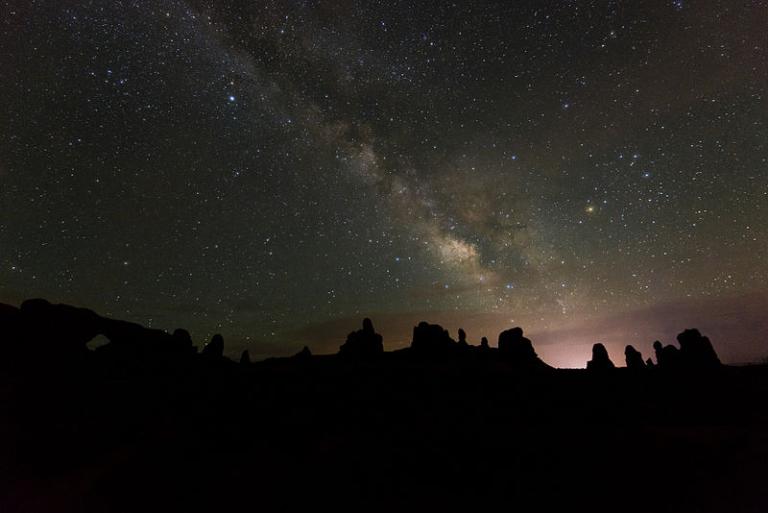
(Wikimedia Commons public domain)
Some more notes taken from my reading. In this case, some passages from Chris Impey, University Distinguished Professor and Deputy Head of the Department of Astronomy at the University of Arizona, extracted from his book How It Began: A Time-Traveler’s Guide to the Universe (New York and London: W. W. Norton and Company, 2012):
Imagine the Sun scaled down to a 10-foot-diameter ball of glowing gas. On this scale the Earth is a grape 1000 feet from the Sun, and the edge of the Solar System is 6 miles away. (27-28)
Suppose you wanted to fit the Solar System in your living room. The Sun would shrink to a barely noticeable 1-millimeter dot of light and the giant planets would be 0.10 millimeter or less, the width of a human hair, scattered around the edge of the room. Earth would be invisibly small.
Space is stunningly empty. (28)
Let’s go back to the model where the Solar System fits in your living room. That reduces real distances by a factor of a trillion. The Sun is roughly a millimeter across and the planets are dust motes scattered through the room, unnoticed since you haven’t vacuumed for a while. On this scale, the nearest star is 25 miles away. We imagine in a nearby town there’s another living room with a tiny dot of light in it and a similar set of orbiting dust motes. (46)
We can also think of the model in terms of light travel time. Shrinking space by a factor of a trillion also shrinks light speed by a factor of a trillion, making its motion visible, or at least imaginable. From the dust-grain-sized Sun, light moves outward at an inch a minute, talking eight minutes to reach the Earth and several hours to reach the most distant planets. Meanwhile, light from the nearest star is approaching at the same glacial pace. It takes four years to creep down the road from the neighboring town, being overtaken along the way by ants and slugs.
We see stars as they were, not as they are. (46-47)
The far reaches of the Solar System are seen in hours-old light, the nearest stars are seen in years-old light, and the faintest stars in the night sky are seen as they were centuries ago. (47)
You can ask what the bright star Sirius is doing right now, but we can’t know — that question can’t be answered. We’ll have to wait nine years for the light to reach us. Someone right next to Sirius might know, but to tell us they’d have to send a signal and that would take nine years to get to us too. We’re just stuck with musty information. (47)
Don’t worry about the old light; stars lead quiet lives and probably aren’t doing anything different now than they were then. (51)
This should all make us rather humble.
***
A couple of really interesting meta-scientific items:
“Is Reproducibility Really Central to Science?”
“Scientific knowledge is drowning in a sea of research”












